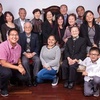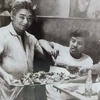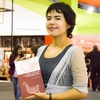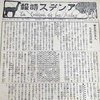
They were raised and educated in Japan. Their parents took them to Peru after finishing their primary or secondary studies. They are bilingual. They study and work. They like Peru. They are friends, they joke, they laugh, but above all they share the experience of being children of dekasegi. Only …

Toshiro Konishi avoids labels. At his recently opened restaurant Oishii, he only prepares food that he is born to make, no matter what others call it. In any case, if a name had to be given, it would be his. “It's not Japanese food, it's Toshiro Konishi food. The whole …

The Okuyama family is one of the few Nikkei families in Peru that are fortunate to have an Issei at home. Motome Okuyama turned 101 on November 7, 2015 in top form: she sings, writes, cooks, plays gateball, sews, goes shopping alone and is able to perform 64 songs by …

In June 2015, Mitsuharu Tsumura's restaurant Maido was ranked among the 50 best in the world, according to a ranking by Restaurant magazine. It was a milestone for Nikkei cuisine. Tsumura then declared: “The most beautiful thing is that it is the first time in history that a Nikkei restaurant, …

At first they were dekasegi , people who migrate to work and save with the purpose of returning to their land. 25 years later, the Peruvians who began to migrate to Japan when hyperinflation and terrorism were destroying the country are no longer temporary workers, but immigrants. What balance can …

Journalism in the Peruvian-Japanese community is almost as old as the history of Japanese immigrants itself. The need to be informed in their own language prompted the appearance in 1909, ten years after the beginning of Japanese immigration to Peru, of Nipponjin (The Japanese), the first Japanese news program in …

With an infectious smile, Junko Uehara escapes from her Fujinkai choir class for a few minutes. It was just for a few minutes, to take photos for the article. “My mother doesn't like missing her classes,” says her daughter Ana. But sometimes, reliving memories with family is enough to escape …

Vocation sometimes comes in the most unique ways. Hamano Ryuho remembers that he was about four years old when he inadvertently began to write. He did it as if playing, making marks on the ground with a stick. He also remembers how much he liked the shapes of the ideograms. …